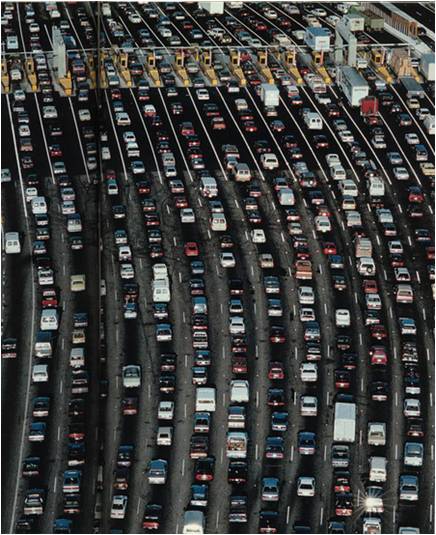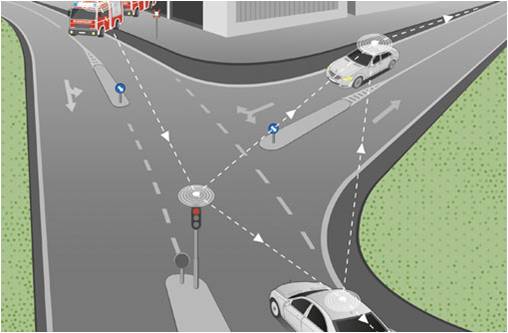

Photo source: http://www.wired.com/autopia/2007/06/bigdollar_relie/
Introduction: This research combines methods and tools available from Computer Science, Transportation Engineering, and Reliability Engineering in order to develop interdisciplinary solutions for an ITS research problem. Design-time planning solutions for ITS require solutions that can holistically integrate physical artifacts, such as traffic modeling, with cyber artifacts, such as solutions for real-time information dissemination over wireless networks.
Methodology: This project develops a methodology for planning and implementing vehicular ad-hoc networks (VANETs), which thoroughly integrate wireless and transportation networks by allowing fleets of vehicles to communicate with each other and with road-side units (RSUs). Several tasks are required in the implementation of this research. 1) Using and/or developing a platform that has the ability to simulate both transportation and wireless networks as well as the interactions between the two. Microsimulation is specifically recommended by the Federal Highway Administration. 2) Developing wireless prototypes for reliable real-time information dissemination. 3) Use a surrogate model that efficiently characterizes the complex system and can be used in order to make multi-objective decisions with optimization techniques. 4) Make the system more realistic by adding multiple user types with human behavior modeling and multiple modes of transportation with transit priority protocols.

Photo source: http://theinformativereport.com/2010/08/06/building-the-car-of-the-future-a-zero-fatality-car/
Application: This project develops VANETs in both urban and highway network settings. The methodology developed in this research will also be applicable in creating many different types of Cyber-Physical Systems.
©